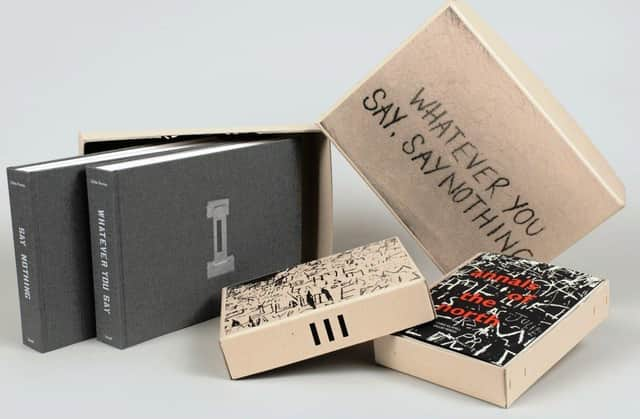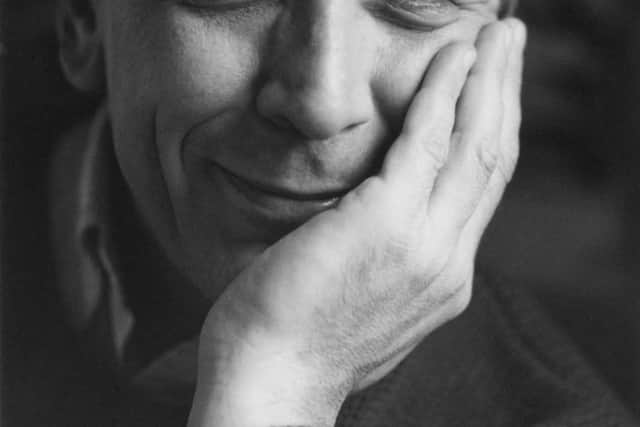Gilles Peress’ chronicle of conflict ventures to the very outer limits


Gilles Peress describes himself as an observer. Not for him the grand title of photojournalist. In fact, he regards it as something of a dirty word, writes Sean McLaughlin.
He’s much happier being known as a chronicler of events. Someone who captures moments in time. And it’s something he’s been doing with consummate skill for the past half century and more.
Advertisement
Hide AdAdvertisement
Hide AdWhether he’s recording the genocide in Rwanda or the ethnic cleansing in the Balkans, the French born photographer never fails to impress. He always tells it like it is.


And so it is the case with his latest tour de force which takes the language of documentary photography to the outer limits.
‘Whatever You Say, Say Nothing’ (Steidl) - which has been 30 years in the making - is a multivolume “documentary fiction” of photographs and documents portraying the conflict in the North of Ireland.
The work organises a decade of photographs across 22 fictional “days”, portraying a conflict that seemed like it would never end—where each day became a repetition of every other day like that day: days of violence, of marching, of riots, of unemployment, of mourning, and also of “craic” where you would try to forget your condition.
Advertisement
Hide AdAdvertisement
Hide Ad“Whatever You Say, Say Nothing” sets the bar dizzyingly high for anyone planning similar ventures in the future. What we have here is truly mammoth: three books, 2,000 pages, 14 kg. This comprises two photo albums, in black and white and almost without words (‘Whatever You Say, Say Nothing’), while the third volume compiles various materials, images and texts, to contextualise the project (‘Annals of the North’). Quite an achievement for Peress who is famously not into labels. “I am not a journalist, not a reporter, not a photojournalist, not an artist,” he once said.
Peress - who is now in his seventies - describes ‘Whatever You Say, Say Nothing’ as an “object” and likens it to a “paper movie”.
“It is not really a photobook and it’s definitely not about photography, nor about ‘good photography’”, he says. “It is an experiment in visual language using photographs and is closer to a ‘paper movie’ than to a book, per se.
“To grasp for the totality of the pain, love and violence I found myself surrounded by in Ireland, it had to be much more a ‘documentary fiction’ than either journalism or documentary work.”
Advertisement
Hide AdAdvertisement
Hide AdAs a 26-year-old, in 1972, Gilles Peress was in Derry on Bloody Sunday, working for Magnum Photos. He witnessed the massacre, narrowly missed being shot, and took the pictures of 31-year-old Paddy Doherty moments before he was killed while trying to crawl to safety in front of the Rossville Flats. These pictures would eventually help prove the father of six’s innocence.
Peress returned to Ireland in 1979 and was here at the beginning of the 1981 hunger strike. His photos from that time are a distinctive - sometimes unusual - look at our history.
He explains: “In making this book, my intent was to describe a totality in all its simultaneities: not just to represent what was happening on each side of the divide between nationalists and loyalists, or on either side of the class divide between the rich and the poor, but to represent life in all its incarnations.
“I wanted to describe days where big events, historical events, happen, and I wanted to describe days where nothing happens, intensely boring days, days that never end.
Advertisement
Hide AdAdvertisement
Hide Ad“I wanted to describe the texture and structure of life, in all its details: what is a glass of beer, a serving of chips, a bed; what is a riot, what is a field, a bird, a cloud. In short, I wanted to describe all that makes a reality, all that defines existence and experience in a space that is ritualised by recurring and cyclical violence over a long period of time. If I could have described air and time passing, I would have; actually, I think I tried.”
Of course, the horror of Bloody Sunday features prominently in the “object” - including the “timeline” images leading up to the fatal shooting of Paddy Doherty. While we may have thought we’d become somehow hardened to these images, they remain powerfully shocking.
Peress says he’s tried to describe time in its “helicoidal” structure - “where today is not only today but all the days like today; days of violence, days or marching, of riots, of unemployment, of prison, of mourning, and also days of ‘craic’ where you try to forget your condition.”